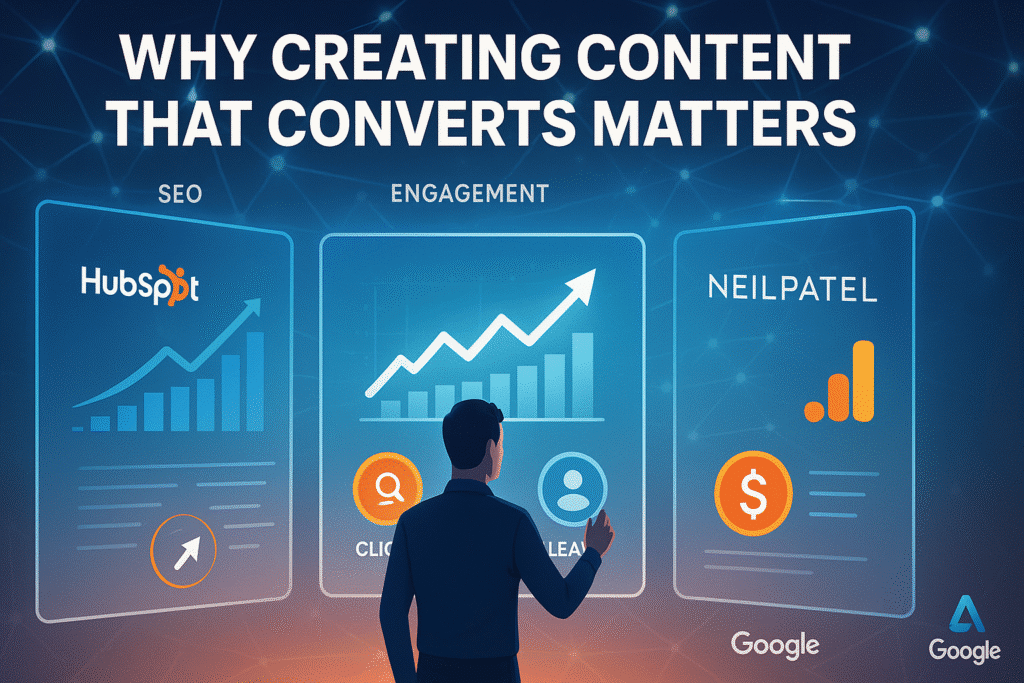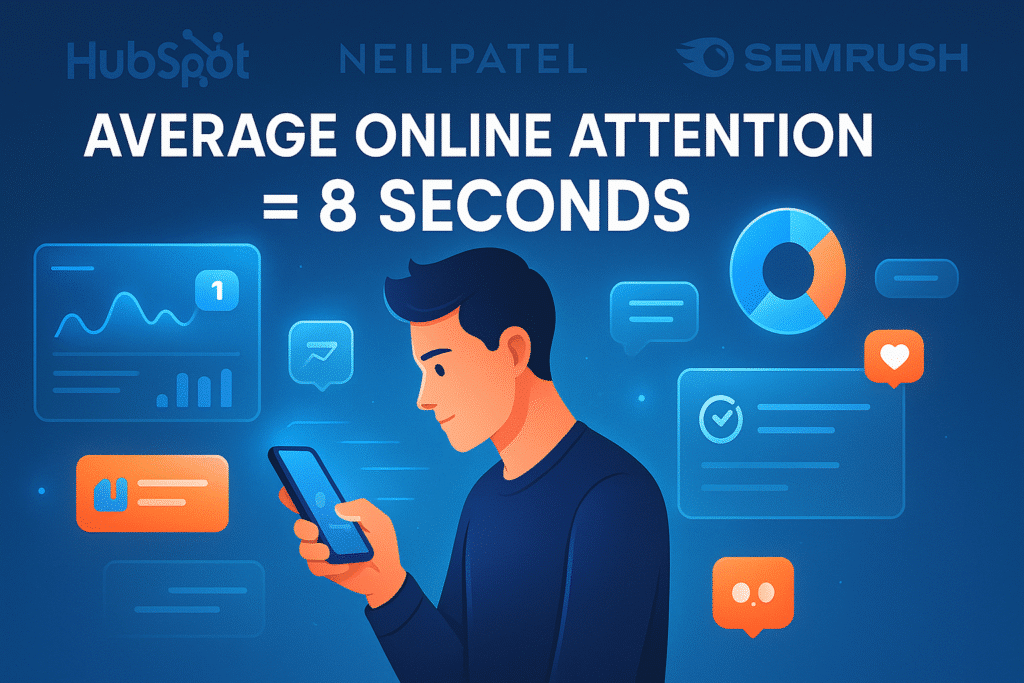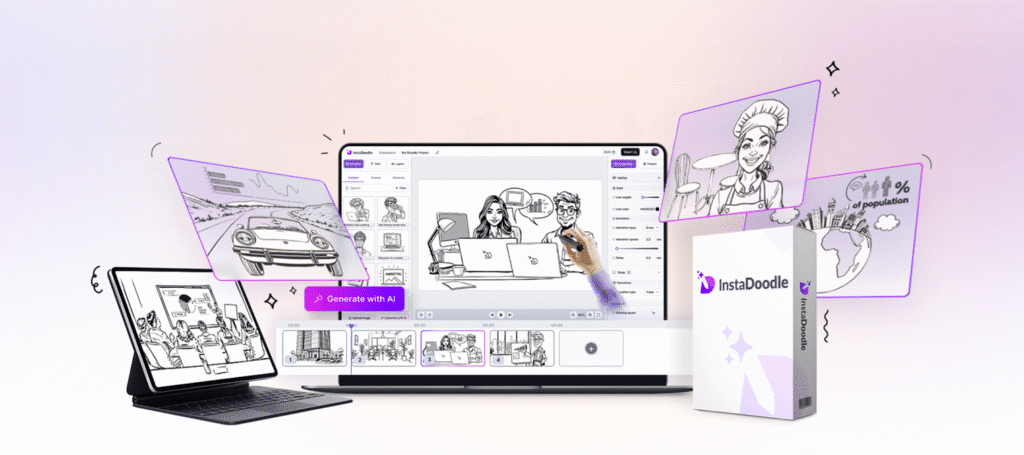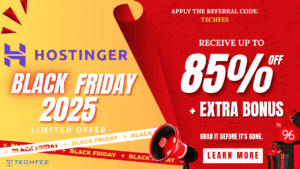Have you ever wondered how to create content that converts — content that doesn’t just attract clicks, but actually drives action, leads, and sales? In today’s digital world, great content is everywhere… but converting content — the kind that builds trust, connects emotionally, and inspires people to take the next step — is what truly sets brands apart.
Think about it: you can pour hours into writing blog posts, social media updates, or emails, but if they don’t convert, you’re only halfway to success. High-engaging, conversion-driven content is the bridge between visibility and profitability. It’s not just about getting traffic — it’s about turning that traffic into loyal readers, subscribers, and paying customers.
In this complete guide, you’ll discover the step-by-step roadmap to creating content that actually converts — from understanding your audience’s pain points to crafting irresistible headlines, powerful CTAs, and SEO-friendly structures that turn engagement into measurable growth.
You’ll also learn real-world examples of conversion content, pro copywriting secrets, and access free resources to help you plan, write, and optimize your content like a professional marketer.
By the end of this guide, you’ll not only know how to write content that converts — you’ll have a proven, repeatable system you can apply across blogs, social media, and client projects to generate consistent results.
So, if you’re ready to stop guessing and start creating content that sells without sounding salesy — let’s dive in. 🚀
What Does “Content That Converts” Really Mean?

At its core, content that converts is content with purpose. It’s not just about writing words that sound good or designing visuals that look appealing — it’s about crafting messages that inspire your audience to take action. Whether that action is clicking a link, signing up for a newsletter, downloading a guide, or making a purchase, conversion-driven content focuses on moving your readers one step closer to your goal.
The main difference between content that attracts and content that converts lies in intent and outcome. Attractive content grabs attention — it entertains, informs, or gets likes and shares. But converting content goes further; it resonates emotionally, builds trust, and gives your audience a clear reason to act. While attractive content gets people to stop scrolling, converting content gets them to say “Yes, this is exactly what I need.”
Ultimately, conversions are the true measure of content success. You could have thousands of views or social shares, but if your content doesn’t generate leads, sign-ups, or sales — it’s not fulfilling its real purpose.
Conversion-driven content aligns your brand message with your audience’s needs, guiding them through a journey that ends in meaningful action. In other words, it transforms attention into impact — and that’s where real growth begins.
Why Creating Content That Converts Matters
Today, attention is the most valuable currency online — and it’s shrinking fast. With countless blogs, videos, and social posts competing for the same audience, capturing someone’s focus for even 10 seconds has become a challenge.
In this overcrowded digital landscape, only content that converts stands out — the kind that immediately connects, delivers value, and motivates readers to take the next step. Simply producing “good content” is no longer enough; your audience craves relevance, trust, and a reason to engage deeper.
This is where the powerful link between SEO, engagement, and conversion rate comes into play.
Search-optimized content helps you attract the right audience, engaging storytelling keeps them reading, and strategic calls-to-action turn that engagement into measurable conversions.
When SEO and conversion copywriting work together, you don’t just rank higher — you convert better.
It’s about merging data with psychology to craft content that satisfies both search engines and human emotions.
Look at brands that have mastered this approach. HubSpot built its empire by turning informative blog posts into lead magnets.
Neil Patel Digital converts visitors into clients through content that educates first and sells later. Even small eCommerce brands are growing rapidly by using blog tutorials, how-to videos, and social proof to convert traffic into loyal customers.
Their secret? Every piece of content is designed with intent — to attract, engage, and convert.
So, if your goal is not just visibility but sustainable growth, conversion-focused content is your greatest competitive edge.
It’s how you cut through the noise and build a brand that truly wins attention — and action.
how to create content that converts

Step 1 – Understand Your Audience Deeply
If you truly want to create content that converts for clients, start by understanding who you’re speaking to — not just what you’re selling.
Great content begins with empathy. Before writing a single word, dive into your audience’s pain points, goals, and desires.
Ask yourself: What challenges are they facing right now? What outcomes are they chasing?
When your content reflects their emotions, struggles, and aspirations, it instantly feels personal and persuasive — and that’s what drives conversions.
To uncover these insights, let data guide your creativity. Use tools like Google Analytics to identify which topics attract the most engaged visitors and where they drop off.
Check Google Search Console to see what queries bring users to your site — those keywords often reveal real problems your audience wants solved.
Combine this with social insights from platforms like LinkedIn, Twitter, or Facebook to track discussions, comments, and trending pain points.
Data removes the guesswork and helps you focus on what truly matters to your readers or clients.
Next, bring this research to life by creating detailed buyer personas — fictional but data-backed profiles representing your ideal audience segments.
Each persona should highlight demographics, goals, challenges, preferred content formats, and buying motivations. Once you’ve built these personas, map them to your content funnel:
Top of the Funnel (TOFU): Educational posts that build awareness.
Middle of the Funnel (MOFU): Guides, comparisons, or case studies that nurture interest.
Bottom of the Funnel (BOFU): Conversion-focused content — offers, testimonials, and CTAs.
When you align every piece of content with a specific persona and stage of the buyer journey, you move beyond guesswork and start crafting precision-driven content that converts — turning casual readers into loyal customers and clients who trust your expertise.
Step 2 – Research Keywords with Conversion Intent
The foundation of any content that converts begins with the right keywords — because not all keywords are created equal.
If you’re wondering what keywords convert the best, the answer lies in understanding the difference between informational and transactional intent.
Informational keywords are used when people are seeking knowledge, such as “what is content marketing” or “how to start a blog.”
These are perfect for attracting traffic and building awareness. On the other hand, transactional keywords signal a user’s readiness to take action — phrases like “best SEO tools for small business” or “hire digital marketing consultant” show that the searcher is close to converting.
While informational terms draw an audience in, transactional keywords turn that attention into leads and sales.
To find these high-converting opportunities, leverage keyword research tools such as Ahrefs, SEMrush, or Ubersuggest.
Filter for queries with strong commercial intent — look for words like best, top, buy, review, comparison, pricing, and services.
Check the keyword difficulty, cost-per-click (CPC), and search volume to balance relevance with ranking potential.
You can even use these tools to analyze competitors’ top-performing pages to discover the exact phrases driving their conversions.
Let’s see how this works across different industries:
Marketing niche: “best email marketing software,” “SEO agency for startups,” “hire content writer.”
SaaS niche: “CRM software free trial,” “project management tool pricing,” “cloud hosting comparison.”
E-commerce niche: “best running shoes for men,” “buy wireless earbuds online,” “top budget laptops 2025.”
By targeting these conversion-intent keywords, your content naturally attracts users who are closer to making a decision — meaning every page you publish has the potential to generate real ROI, not just clicks.
When done right, keyword research becomes less about chasing traffic and more about capturing intent — the true engine behind content that converts.
Step 3 – Craft a Compelling Hook and Headline
If you want to master how to write content copy that converts, start with your headline — because it’s the first impression that decides whether your content gets ignored or clicked.
In fact, studies show that 8 out of 10 people will read your headline, but only 2 will read the rest.
That’s why your hook and headline must instantly capture attention, spark curiosity, and promise value within seconds.
The secret lies in using emotional triggers that speak directly to human psychology. Tap into curiosity (“You’ll never believe what happened when…”), urgency (“Limited-time strategies that boost conversions fast”), or benefit-driven language (“Double your sales with one proven content tweak”).
These emotional cues compel readers to click because they trigger both desire and FOMO — fear of missing out.
To further enhance your headline’s power, use strong action verbs and power words like proven, ultimate, exclusive, secret, master, boost, and guaranteed.
Keep it clear and specific — readers should instantly understand what they’ll gain by clicking. Avoid vague or clickbait phrases that disappoint. Instead, pair clarity with curiosity — the perfect formula for a higher click-through rate (CTR).
Here are some examples of high-converting headlines across different industries:
Marketing: “7 Proven Copywriting Hacks That Instantly Boost Conversions”
SaaS: “The Ultimate Guide to Choosing CRM Software That Actually Grows Your Business”
E-commerce: “Stop Wasting Money on Ads — Try These 5 Landing Page Tricks That Sell”
Affiliate Marketing: “This One Blog Strategy Turned My $100 Investment Into $5,000 in 30 Days”
Each of these examples works because they clearly communicate a benefit, use power words, and appeal to emotion — the three pillars of a headline that sells.
Remember, if your headline doesn’t make people stop scrolling, your content never gets a chance to convert.
Step 4 – Write Content That Builds Trust
No matter how optimized or persuasive your content is, it won’t convert if your audience doesn’t trust you.
People buy from brands and creators they believe in — and that belief is built through authentic storytelling and emotional connection.
Instead of sounding robotic or overly promotional, share relatable stories that make your audience see themselves in your message.
Storytelling turns information into emotion, helping readers feel understood and valued.
For instance, start with a personal challenge, show the journey, and end with a solution — this emotional arc triggers empathy and credibility.
To strengthen that trust, use case studies, testimonials, data, and proof elements. These act as evidence that your claims are real.
For example:
In a blog post, you might include before-and-after results (“Our client increased conversions by 62% after implementing this strategy”).
In a social media post, you can feature a short client testimonial with a quote image (“‘TechFee’s content strategy doubled our website leads!’”).
In an email copy, highlight numbers or screenshots of real growth (“Here’s how we helped 27 small businesses boost sales through content that converts”).
These examples create transparency, showing readers that your content isn’t based on theory — it’s backed by results.
When it comes to tone, aim for a voice that is authoritative yet relatable. Speak like a mentor who knows what works but understands the reader’s struggles.
Use simple, confident language — not jargon. Instead of saying, “Our content strategy optimizes conversion metrics,” say, “We help your content bring in real customers, not just clicks.” This balance of authority and authenticity builds emotional safety — your readers start to see you not just as an expert, but as someone who genuinely wants to help them succeed.
In the end, trust is the invisible force behind every conversion. When your content feels real, proven, and personal — your audience won’t just read it; they’ll believe in it and act on it.
Step 5 – Optimize for Readability and Engagement
Even the most valuable content can fail if it’s not easy — or enjoyable — to read.
That’s why high-converting content isn’t just about what you say, but how you present it.
To keep readers engaged from start to finish, focus on readability and visual flow. Use short paragraphs (2–3 lines max) to make your content scannable.
Add clear headings and subheadings that guide readers through the journey, and use bullet points or numbered lists to break complex information into digestible chunks.
Every section should lead smoothly to the next, keeping momentum alive.
Next, enhance engagement with visuals and call-to-actions (CTAs). Infographics, charts, screenshots, and relevant images make your content more dynamic and easier to absorb.
Strategically place CTAs — not just at the end, but within the flow of your content — when the reader’s emotional interest is highest.
For example, after explaining a success story, include a button or link saying “Get your free content strategy checklist” or “Try this method today.” These subtle nudges encourage immediate action without feeling pushy.
Behind the scenes, design psychology plays a crucial role in conversion. Colors, layout, and whitespace influence how readers feel and where they focus. Use contrasting colors for CTAs to make them stand out (e.g., a bold orange button on a white background).
Keep your layout clean and distraction-free, allowing the eyes to naturally flow from headline to CTA. Studies show that users are 75% more likely to click on CTAs placed in visually balanced sections with clear directional cues — such as arrows, icons, or even human gaze patterns pointing toward the button.
For example, a marketing agency once A/B tested two blog layouts: one with dense text and generic CTAs at the bottom, and another with short paragraphs, visual separators, and mid-content CTAs.
The result?
The second layout improved the conversion rate by 48%. That’s the power of readability and smart design — when your content looks inviting and effortless to navigate, readers stay longer, engage more, and convert faster.
💡 Tool Recommendation: InstaDoodle – Create Videos That Convert
If you want your content to not just attract but truly convert, visuals and videos are your secret weapon. One of the easiest ways to achieve that is by transforming your written content into engaging whiteboard or doodle-style videos — and InstaDoodle makes it effortless.
With InstaDoodle, you can create stunning, professional-quality doodle videos in just minutes — no technical skills or design experience needed. These videos grab attention fast, simplify complex ideas, and keep viewers hooked till the end — perfect for boosting engagement and conversions on your blog, landing pages, or social media.
Whether you’re a content creator, digital marketer, or small business owner, InstaDoodle helps you bring your stories to life with animated visuals that communicate and convert.
👉 Try InstaDoodle today and turn your ideas into powerful, high-converting videos that make your audience stop, watch, and take action!
Grab Access To InstaDoodle Today!Step 6 – Add Strategic CTAs That Drive Action
A well-written article may educate your audience — but a well-placed Call to Action (CTA) turns that education into execution.
To truly create content that converts, your CTA must be persuasive, timely, and emotionally aligned with the reader’s intent. The best CTAs don’t just tell people what to do — they make them want to do it.
So, what makes a CTA persuasive? Three key factors: timing, emotion, and clarity.
Timing: Place your CTA when readers are most emotionally engaged — right after a powerful story, statistic, or proof of success.
Emotion: Use language that sparks excitement or relief (“Get started today,” “Unlock your free access,” “Start growing now”).
Clarity: Keep it simple and actionable. Avoid vague prompts like “Learn more.” Instead, use direct, benefit-driven commands such as “Download your free checklist,” or “Claim your 15-minute consultation.”
When it comes to content stages, tailor your CTAs based on where your reader is in the funnel:
Awareness Stage (Top of Funnel): Focus on education and value. Use CTAs like “Read the full guide,” “Watch the video tutorial,” or “Download free eBook.”
Decision Stage (Middle of Funnel): Nurture trust with proof and soft offers. Try “See real results,” “View case studies,” or “Get your strategy session.”
Purchase Stage (Bottom of Funnel): Drive urgency and action with CTAs such as “Start free trial,” “Buy now,” or “Book your consultation today.”
As for where to place CTAs for best conversions, research shows readers are most receptive when CTAs are:
Above the fold — visible without scrolling (for quick action-takers).
Mid-content — after delivering value or an emotional hook (when trust peaks).
At the end — to capture motivated readers ready to act.
For instance, a blog post with multiple CTAs like “Download Now,” “Start Free Trial,” and “Get Your Strategy Session” placed strategically throughout can outperform a single end-of-page CTA by up to 60% more conversions.
Remember, your CTA is the handshake that closes the deal. When it’s emotionally timed, visually clear, and contextually relevant, it transforms passive readers into active participants — and that’s the real power of conversion-driven content.
Step 7 – Incorporate SEO to Boost Visibility and Conversions
If you’re wondering how to write SEO content that converts, the key lies in balancing optimization with persuasion.
SEO may get people to your page, but it’s conversion copywriting that keeps them there and turns their curiosity into action.
The two work best together — SEO brings the right audience, while conversion-focused writing ensures that audience does the right thing once they arrive.
To blend both effectively, start by optimizing your content for search intent, not just keywords.
Use your target phrases naturally in titles, headings, and introductions, but make sure the overall message aligns with what readers truly want.
Focus on benefits, not buzzwords. Then, use conversion copywriting techniques — such as emotional triggers, proof elements, and clear CTAs — to turn SEO traffic into meaningful results.
When your content satisfies both Google’s algorithms and human psychology, it ranks better and converts faster.
Don’t overlook the technical details that quietly boost your content’s conversion power — like internal linking and schema optimization.
Internal links help readers discover related content, increasing time on site and guiding them deeper into your funnel.
Schema markup, on the other hand, enhances how your pages appear in search results with rich snippets, FAQs, and star ratings — increasing your CTR (click-through rate) before users even visit your site. For example, a blog with “HowTo” or “FAQ” schema often sees a 20–30% boost in organic clicks, giving your content more exposure and trust at first glance.
Finally, remember that high-ranking SEO content fuels conversions long after it’s published. A top-ranked article consistently attracts qualified visitors who are already searching for your solution — giving you a steady stream of potential leads and customers without extra ad spend.
When done right, SEO doesn’t just bring traffic; it builds a conversion engine that compounds over time.
So, don’t treat SEO and copywriting as separate strategies — merge them into one seamless experience.
Create content that’s discoverable by search engines, engaging for readers, and persuasive enough to turn visitors into loyal customers. That’s the formula for sustainable digital growth.
Step 8 – Measure, Analyze, and Optimize Your Content
Once your content is live, the real work begins — measuring and improving its performance.
If you’re asking “How do I track content conversion performance?” the answer is to combine data with insight.
Every high-converting content strategy relies on consistent tracking and fine-tuning. You can’t improve what you don’t measure, so start by monitoring key performance indicators such as CTR (Click-Through Rate), bounce rate, time on page, lead form fills, and conversion rate. These metrics reveal not just how many people are visiting, but how well your content is convincing them to stay, engage, and act.
To collect this data, use tools like Google Analytics for overall traffic and goal tracking, Google Search Console for CTR and keyword performance, and Hotjar for visual behavior analysis through heatmaps and session recordings.
These tools help you see where users click, where they drop off, and which sections hold their attention. Additionally, implement A/B testing tools like Optimizely or Google Optimize to compare variations of headlines, CTAs, and layouts.
Even small changes — such as a different headline or button color — can lead to significant increases in conversions.
Once you’ve gathered insights, the next step is refining underperforming content for higher ROI. Identify which pieces are generating traffic but not leads, and adjust the messaging, structure, or CTA placement.
For example, if visitors leave after reading halfway, add a mid-content CTA or break long text with visuals. If your CTR is low, rework your meta title and description to be more benefit-driven.
The goal is not to create more content, but to make your existing content work smarter.
Optimization is a continuous cycle — measure, analyze, test, and improve.
Over time, this process compounds your results, ensuring that every blog post, landing page, or email doesn’t just attract readers but actively contributes to your business growth.
When you track with precision and optimize with purpose, your content evolves from good to great — and your conversions rise with it.
Step 9 – Real-World Examples of Content That Converts
If you’re thinking, “Can you show examples of content that converts?” — absolutely.
Let’s look at a few real-world examples across different platforms to understand what makes them effective and how you can apply the same principles to your own strategy.
1. Blog Example – HubSpot’s In-Depth Guides
HubSpot’s long-form blog posts, such as “The Ultimate Guide to Content Marketing,” are prime examples of conversion-focused content. Each post educates readers in detail, offers free templates or checklists, and ends with a soft yet strategic CTA like “Download your free content strategy guide.”
Why it works: It provides high-value information first, builds trust, and then guides readers to the next logical step — capturing leads through valuable resources.
Key takeaway: Give more than you ask. Offer value upfront, and conversions will follow naturally.
2. Social Media Example – Nike’s Motivational Campaigns
Nike’s Instagram and X (Twitter) posts often mix emotion with empowerment, using short storytelling captions paired with powerful visuals. Their tagline “You’re stronger than you think” connects emotionally while reinforcing brand identity.
Why it works: It builds an emotional bridge, not just a marketing one. The content resonates with users’ goals and lifestyle, turning inspiration into brand loyalty.
Key takeaway: On social media, emotional connection > direct selling. Inspire action through relatability and purpose.
3. Video Example – Dollar Shave Club’s Viral Ad
The famous “Our Blades Are F**ing Great”* video launched Dollar Shave Club into viral fame. It combined humor, storytelling, and a clear offer — all within 90 seconds. The CTA was simple: “Try our blades for $1.”
Why it works: It instantly communicates the product’s value, entertains the audience, and ends with a low-friction call to action.
Key takeaway: Story + Simplicity = Sales. A single, confident CTA performs better than multiple scattered ones.
4. Ad Copy Example – Airbnb’s “Belong Anywhere” Campaign
Airbnb’s ad copy doesn’t focus on booking rooms — it sells belonging and experience. Lines like “Don’t just go there. Live there.” evoke emotion, while the visuals reinforce comfort and community.
Why it works: It appeals to deeper human needs — connection and authenticity — instead of features or price.
Key takeaway: People don’t buy products; they buy experiences and identity.
Across all these examples — whether a blog, social post, video, or ad — the secret formula stays the same: clarity, emotion, and action. They attract attention, deliver value, build trust, and lead readers or viewers to take the next step. When you align these elements consistently, your content won’t just perform — it will convert.
Step 10 – Pro Tips to Create Evergreen High-Converting Content
Once you’ve mastered the process of creating content that converts, the next step is to make it evergreen — content that continues to drive traffic, leads, and sales long after it’s published.
The smartest marketers don’t just create once; they repurpose and refresh their best-performing pieces across multiple platforms to extend their lifespan and reach new audiences.
For example, turn a high-performing blog post into a YouTube explainer video, summarize its insights into a LinkedIn carousel, use snippets for email newsletters, and adapt quotes or stats for social media ads.
Each platform amplifies the same message in a different format, multiplying your visibility without multiplying your workload.
But repurposing only works when you maintain consistency in messaging and tone. Your brand voice should feel familiar wherever your audience finds you — whether they read your blog, watch your videos, or see your ad.
Keep your visuals, phrasing, and emotional tone aligned across all channels to build recognition and trust. Inconsistent messaging can confuse potential customers and weaken your credibility. Consistency, on the other hand, reinforces authority — it tells your audience, “You can count on us for clarity, value, and results.”
Finally, to keep your content truly evergreen, update it regularly. Trends, search algorithms, and audience needs evolve fast — especially in digital marketing.
Review your top-performing posts every 3–6 months to refresh data, add new insights, or adjust CTAs to match current goals. Even a small update — like adding fresh examples, optimizing for new keywords, or improving visuals — can boost your rankings and conversions instantly.
Evergreen content isn’t about creating once and forgetting it — it’s about creating once, improving forever. By repurposing intelligently, maintaining a strong and consistent voice, and keeping your content up-to-date, you build a library of assets that continue to perform, convert, and grow your brand for years to come.
Final Thoughts – Build Content That Sells Without Selling
Creating content that converts isn’t about chasing clicks — it’s about crafting meaningful experiences that educate, engage, and inspire your audience to take action.
Throughout this guide, we’ve explored a complete, step-by-step framework — from understanding your audience and researching conversion-focused keywords to crafting powerful headlines, optimizing for readability, adding strategic CTAs, and blending SEO with persuasive storytelling. Each step works together to turn your content into a growth engine that builds trust, authority, and consistent results.
Now it’s your turn to take action. Start by applying just one strategy from this guide — maybe improving your CTAs, refreshing your existing content for conversions, or optimizing your next blog post for both SEO and human emotion. Small changes can create massive shifts in engagement and sales when done with intent.
And if you’re ready to skip the guesswork and want professionally written, high-converting content tailored to your brand — I can help. At TechFee Digital Marketing Services, I work with startups and small businesses to craft content strategies that attract traffic and convert it into loyal customers.
👉 Take the next step: Get your conversion-focused content strategy today and start turning words into measurable growth.
Because when your content connects, your business converts — and that’s where real success begins. 🚀
🚀 Ready to turn your words into results?
Let’s craft high-converting content for your business that attracts, engages, and drives real sales.
Frequently Asked Questions
💬 If you really liked this article, please share it with others, leave a comment below, and subscribe to our email newsletter to get more digital marketing tips, strategies, and updates straight to your inbox! 🚀











